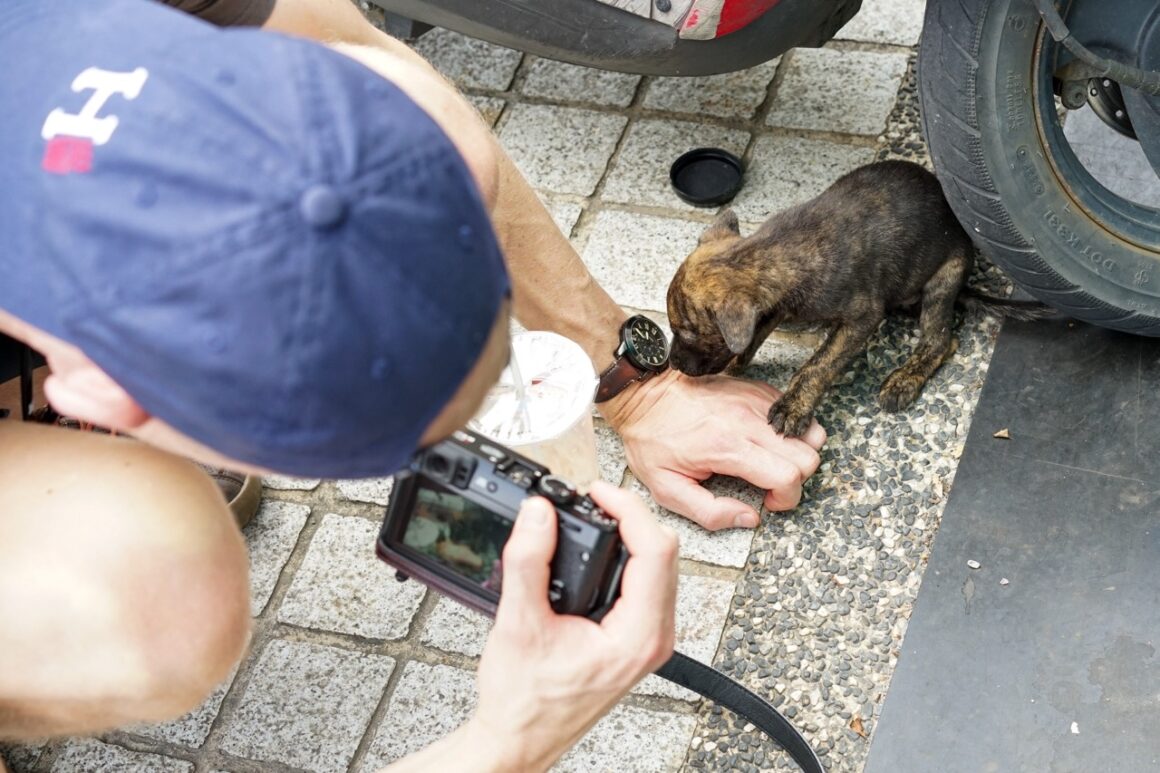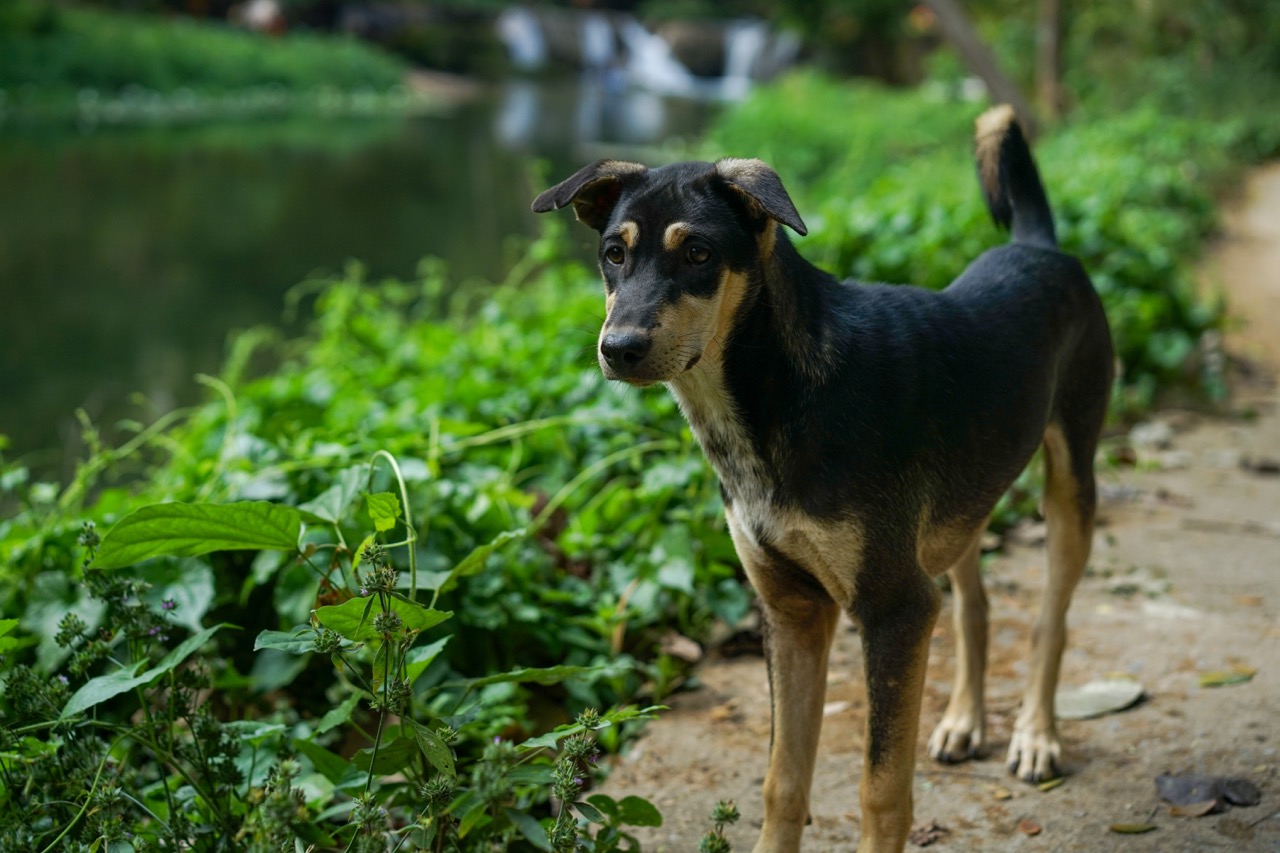Author Chris van Laak
Photographer Chris van Laak
Editor Chih Yi Chen
I was lucky enough to meet “Xiaohei” before she and her family moved on. A medium-sized mutt with short black fur, she and the other 10 or so dogs that lived with her were likely the offspring of generations of strays who have always lived close to humans and depended on them but roamed freely because they weren’t “owned” by anyone. Xiaohei, however, was the only one among them who allowed a handful of trustworthy humans to pet her. I was one of them.

Apparently, Taiwan has many stray dogs and cats—and many would say it has a “stray problem” as there are simply too many of them. However, Whether the population is as large as perceived is a question of perspective. There are fewer than in other parts of the world that have similar tropical/subtropical climates, especially poorer countries. But there are more stray animals in Taiwan than in other developed nations, in part because most of them have climates in which strays cannot procreate as easily as in Taiwan, but also because of certain problematic attitudes among many Taiwanese.
The life of a stray
Many of Taiwan’s stray dogs live lives similar to Xiaohei—on the outskirts of settlements where they have enough space to retreat when they feel threatened, but find enough food to sustain themselves, in large part provided by caring individuals, often older people, who have made it their mission to feed them, often at night—every night over many years.
Just like Xiaohei, they are from lineages of stray animals who only occasionally interbreed with abandoned or runaway pets.

Nearly half of Taiwan’s stray dogs fall into this category, said Lu Wanyi (盧莞宜), a veterinarian who cofounded Faith For Animals, an organization that focuses on mitigating Taiwan’s stray animal population.
Speaking of problematic attitudes, however, Lu estimates that only about 5 percent of strays are former pets who were abandoned by irresponsible owners or simply got lost.
The other half of the stray population are the offspring of “quasi pets” and guard dogs who are allowed by their owners to roam freely, but return home frequently.
Their offspring often become strays.
This is mostly a problem in rural areas, where roaming dogs can procreate easily—because owners who allow their dogs to roam like this usually have little awareness about the benefits of spaying/neutering their animals, Lu said.
TNR
This is where Faith For Animals, and other similar organizations conducting “trap-neuter-return” (TNR) programs, come in. In rural areas, this means volunteers of the organization(s) approach households that let their pets roam and try to convince them to have their pets spayed/neutered by in-house veterinarians—usually free of charge to ensure their owners don’t say no to the proposal.
Even though this is not TNR in the strict sense, it is an important part of the organizations’ work, said Lu, as raising awareness of strays—the problems they face and the problems they cause—is essential.

In areas with large, established stray populations, organizations such as Faith For Animals perform classical TNR. They usually work with people who feed the local strays and are willing to help the organizations’ volunteers get close to the animals so they can trap them. The strays are then spayed in the same way a beloved family dog would be spayed; they, too, are given the time they need to recover from surgery under veterinary care and are then returned to the place where they were trapped.
TNR programs usually only focus on female dogs, to save resources while achieving the maximum effect, even though spaying a female dog is a more complex procedure than neutering a male dog.
The animals are earmarked—which means cutting into their ear during surgery—to ensure future TNR campaigns can easily identify whether a dog has already been spayed.
Similar programs focus on cats.
A humane approach
The traditional way of dealing with strays is to trap and euthanize them. Taiwan practiced this approach until 2017, when it introduced a “no-kill shelter” policy after years-long campaigning from civil society groups. Selecting dogs to be killed simply because they were so unlucky to be born on the streets struck many Taiwanese, including politicians, as too cruel.

Proponents of TNR point out that aside from the “cruelty problem,” the practice also helps decrease the number of strays more efficiently than any other approach. Meanwhile, critics point out that only immediate, permanent removal of strays helps protect precious wildlife such as the critically endangered Formosan pangolin that sometimes falls prey to packs of hungry street dogs, which might also pose a threat to people living in the areas where they roam.
Lu said she has therefore gone back to university to do research on wildlife protection—specifically from stray animals, regardless of whether it’s in an area where TNR programs are run or not.
Back to Xiaohei
I met Xiaohei while doing research on an urban renewal project in New Taipei City a few years ago. Before I met her, I befriended an older man who fed the area’s stray dogs every evening, and I eventually went with him one day to take some photos. Xiaohei, with her curious, caring attitude, was his favorite, and she soon became my favorite, too.
When my project was over, however, I no longer had a reason to go back to the area, and I frankly forgot about her and the other dogs who were with her. I only remembered her when starting to think about writing this article.
Early last month, I went back to her area to see whether she was still there. I discovered that the place had changed so much that I could hardly recognize it, with condos, four-lane roads and little parks replacing the open terrain in which stray dogs feel safe. Needless to say, I didn’t see Xiaohei.
Looking at pictures from the days when I went with the kind old man who was feeding her, though, I found something that I hadn’t noticed before: A little notch in her ear that indicates she had been spayed.












